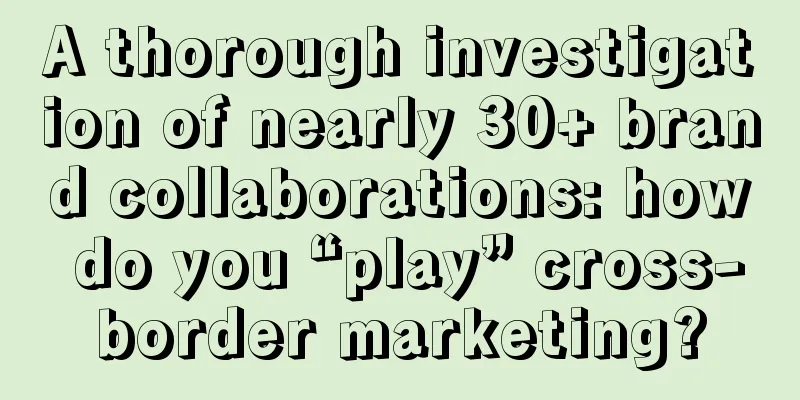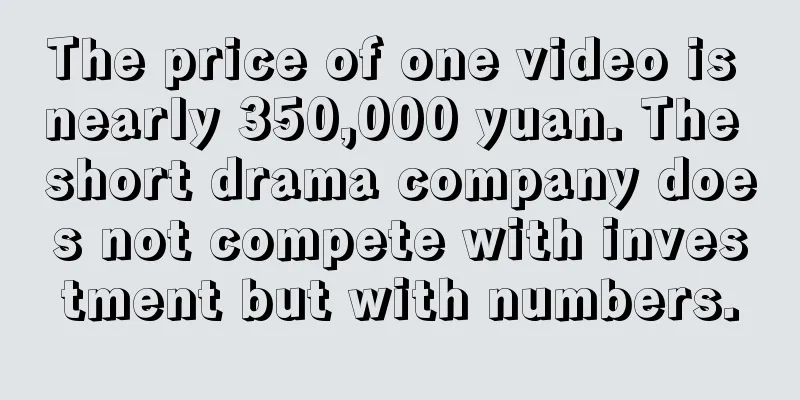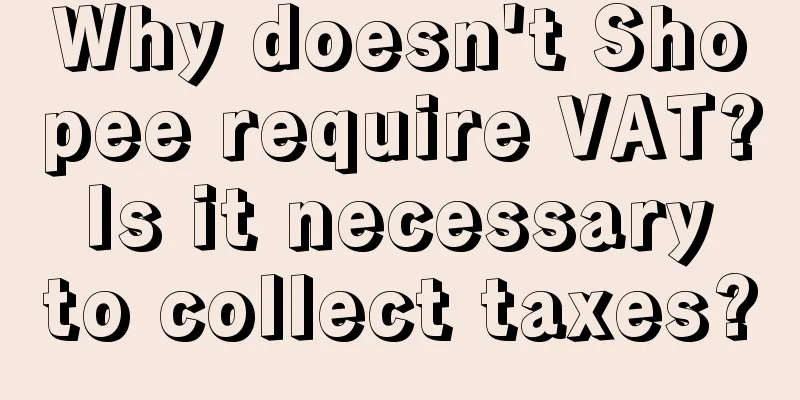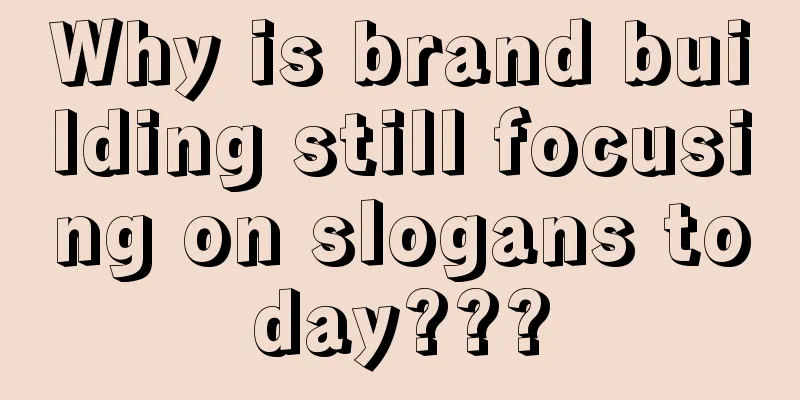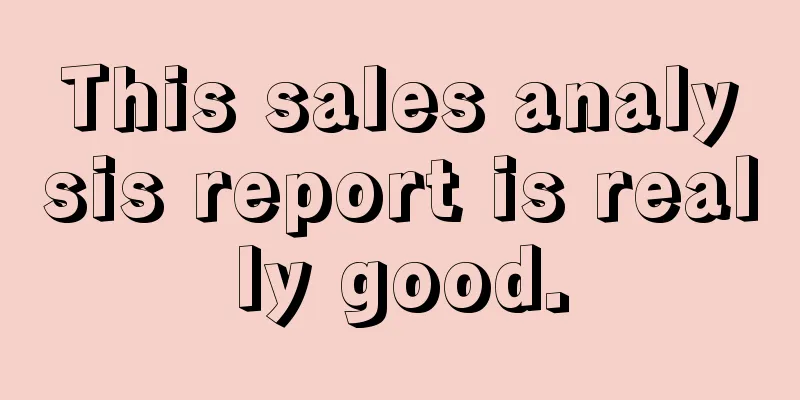Unlocking the secrets of consumers' hearts: How to use subconscious marketing?

DDB once helped Volkswagen to create a creative marketing campaign called "Piano Stairs". The purpose of this campaign was to encourage more people to choose walking instead of taking the elevator by turning ordinary stairs into the shape of a piano, while also demonstrating Volkswagen's innovation and environmental protection concept. The specific form of the activity is as follows: the planner installed a piano-like device on the stairs of a subway station in Stockholm, Sweden, and turned the stairs into a huge piano keyboard through audio technology. When people step on different stairs, different tones will be emitted, turning the entire staircase into a huge interactive musical instrument. The event attracted a large number of tourists and citizens to experience it, aroused widespread attention and heated discussion, and won multiple international creative marketing awards. Data shows that when the stairs become a piano, commuters' behavior also changes: instead of habitually choosing escalators, 66% of people will abandon escalators and choose to take the stairs after the stairs become a piano. The inspiration from this case is that when you try to change a person's behavior, some designs that conform to human behavior psychology are often more effective than blindly promoting it. For this case, saying that walking up the stairs 100 times is more environmentally friendly than taking the escalator is not as good as turning the stairs into a piano keyboard. As a marketing case, it inspires us that when a small link in a marketing element conforms to people's subconscious mind, the results it can bring are far beyond imagination. 01Availability Heuristics, the Basis of Subconscious MarketingSubconscious marketing is an advertising strategy based on subconscious psychology. It mainly influences the audience's subconscious through suggestion, association, emotion, etc., making them unconsciously feel favorable towards the product or brand. The essence of subconscious marketing comes from the availability heuristic, which means that when people make decisions or evaluate a situation, they are more likely to make judgments based on the information they remember or imagine. Simply put, people tend to make decisions based on what is easiest to remember. The availability heuristic is a shortcut to thinking, which is in line with people's instinct to like shortcuts. It is in line with Daniel Kahneman's "fast thinking" in "Thinking, Fast and Slow". For example, when it comes to news reports, people will overestimate the probability and importance of events that are widely reported by the media. For example, people think that tornadoes are more likely to kill people than asthma, even though the latter has a 20 times higher mortality rate than the former. For brand marketing, the easier it is for you to think of a brand, the more importance you will automatically give to it. Brands or products with high advertising frequency are often considered more reliable or high-quality, and are therefore more likely to pay for them. Coca-Cola clearly uses the availability heuristic in its marketing. Coca-Cola advertises frequently throughout the year, which makes consumers think of it first when they want to drink something. At the same time, its advertisements often include scenes of people enjoying Coca-Cola in various social occasions, which is easy to recall and resonate with. 02Emotional marketing is better than rational marketingThe primary application of availability heuristic in marketing is that emotional marketing is greater than rational marketing. A study by Pringle and Field compared the difference in profit growth created by emotional and rational communication activities. The results showed that the average growth created by the emotional route was 31%, which was almost double the 16% of the rational route. According to this study, emotional marketing overwhelmingly won. The scholars who conducted this study summarized the reasons why emotional advertising can bring higher profit growth into two points. First, the human brain can receive emotional information without going through cognition. Secondly, our brains are particularly susceptible to strong emotional stimulation and are better at "recording" such stimulation and leaving memories. For example, a beer advertisement shows a guy sitting on the beach drinking beer with a beautiful woman leaning on him. The beer is paired with a sensual beauty, which makes the consumer impressed and he may unconsciously buy this beer next time. You know, he doesn’t buy beer to get the beauty, but is just attracted by the sensual charm of beer. By associating products with cute images that consumers are familiar with, consumers will unconsciously develop a favorable impression of the product. For example, Michelin's tire man, Disney's Mickey Mouse, and Tmall's cat head are all positive cases. In recent years, Internet companies often like to use pets such as cats and dogs when formulating brand images. The reason is that cats and dogs are close companions of humans, and they are also the most familiar and friendly animals to humans, and the image they give to consumers is also the same. Let’s take another look at Jiaduobao’s PR poster back then and think about why they used a wronged child as the main visual of the poster? By choosing appropriate music, consumers will also unconsciously make different consumption behaviors. A study has found that different background music can have a big impact on people's choices when buying red wine in British supermarkets. The researchers placed French and German red wines of the same price and volume on supermarket shelves and played different types of music every day. On the first day, French accordion music was played, and on the second day, traditional German brass music was played. The results showed that when French accordion music was played, 8 out of every 10 bottles of red wine sold were French red wine. When traditional German brass music was played, 7 out of every 10 bottles of red wine sold were German red wine. The study also conducted a questionnaire survey on consumers who buy red wine, and the results showed that consumers did not realize that the music played was a factor affecting their purchasing decisions. Among them, 86% of the respondents said that they believed that music had no influence on their choices. In other words, consumers were unconsciously influenced by music when they consumed. 03Change your behavior first, then your attitudeIt is often difficult to change a person's attitude, because his attitude is closely related to his world view and values, which are often not something that can be changed overnight. But in comparison, it is not that difficult to change a person's behavior. At the beginning of this article, it is difficult to get people to practice environmental protection concepts, but through a small design, the result of getting people to walk more than taking the elevator is achieved. Many products like to let consumers taste and try them out. The reason is that for some stubborn people, they tend to only choose the brands they have used for many years and are not interested in new brands. Through tasting and trying out, new brands can increase their contact with consumers, and once consumers think these brands are good, they increase their chances of consumption. For products like smart toilets and electric toothbrushes, it is difficult to change the consumption attitudes of conservatives in the short term, but if they are allowed to use them once, the result is likely to be "really good". I have met many such people. For new brands, it is very important to use some kind of "boosting" means to allow consumers to contact and use their products. In the Internet era, one change in brands is that brands used to be advertising brands that relied on advertising to change consumers' attitudes, but now brands are interactive brands and social brands that rely on changing consumers' behavior to change consumers' attitudes. In the 1980s, Nike generally used two methods to attract consumers to buy their sneakers: one is to persuade you through rational advertising, such as "new products on the market", "only xx dollars"; the other is to influence your feelings through emotional advertising, such as accompanying exciting music and showing stories of people overcoming difficulties and climbing to the top. Today, Nike influences potential consumers' behavior by involving them in their marketing activities. For example, more than 5 million people track their running results through the Nike+ application or use Nike sports bracelets to track energy consumption. Many users share information about these tools with friends and even post related information on social media. In the future, Nike will not need to spend a lot of marketing expenses on advertising like in the past, because they have entered a new era of interactive marketing. 04Long -term advertising is to strengthen, not changeWhy do brands keep advertising? There are many answers, one of which is to strengthen people's subconscious choices. Let's start with an example from the field of communication. Lazarsfeld and others conducted a study on the 1940 US presidential election. The study found that 49% of voters never changed their voting intentions from the beginning to the end of the election, and 43% of voters wavered during the election, but ultimately insisted on their original choice. Among all voters, only 8% of voters eventually changed their voting intentions. Therefore, they believe that the main effect of mass communication is not to change the attitudes and behaviors of the audience, but to strengthen their existing attitudes and behaviors. This study is also applicable in the field of marketing. When you want to drink cola, do you buy Coca-Cola or Pepsi? When both are in sufficient supply, people who often buy Coca-Cola will not choose Pepsi, and people who often buy Pepsi will not choose Coca-Cola. Coca-Cola advertises all year round, not to snatch Pepsi's customers, but to strengthen the memory and mind of Coca-Cola users so that they will never buy Pepsi products. The relationship between a brand and its consumers is sometimes like the relationship between friends. The reason you can maintain long-term contact and friendship with your friends is because of memory. If there is no memory, your friendship will no longer exist. Advertising may not promote sales in the short term, but it can maintain your memory of the brand. If you have a memory of the brand, you have a connection, and then there is a chance of purchase. 05Choosing a brand is also choosing a cultureWhen we choose a product, we are often influenced by culture. By making its products a symbol of a certain differentiated culture, a brand can attract fans of the same culture and thus occupy a differentiated market. For example, people who use Apple products think they are at the forefront of fashion, people who use Sony products think they are people who pursue perfection, and people who use Huawei products think they are advocates of domestic brands. Once they have determined what kind of people they are, consumers rarely change brands to maintain a consistent image. When they buy these products, they are actually influenced by the cultural symbols created by these products. When consumers make choices, they do not feel that they are influenced in this way. They make such choices unconsciously. 06 Conclusion:The sale of soap is a typical example of subconscious marketing. In the early days of soap, people bought it not for sterilization, but to add fragrance to their bodies. No soap advertisement will use data comparison to show how many bacteria it can kill and how much the probability of illness can be reduced. On the contrary, soap advertisements often create an attraction through the rich fragrance of the product, which is the emotional and irrational value of the product. When consumers choose soap, they think of the fragrance that a person exudes after using the soap, even if the fragrance is very slight. For brands to successfully use subconscious marketing, they need to fully understand the needs, values and lifestyles of the target audience, so as to design advertisements and marketing strategies that can touch their subconscious minds. At the same time, brands need to establish a stable image and reputation, and strengthen potential consumers' impression and loyalty to the brand through long-term advertising and brand building. Author: Xunkong, WeChat public account: Xunkong’s Marketing Revelation |
<<: The blind box market has lost its way and is turning to IP shaping
Recommend
With 100 million members and member contributions accounting for over 40%, how does the “latecomer” Burger King develop its private domain?
Burger King, which entered the Chinese market late...
How is the listing price calculated for cross-border e-commerce? What are the listing rules?
In recent years, cross-border e-commerce platforms...
How to do e-commerce on Xiaohongshu, summarizing these experiences from the cases of Dong Jie and Zhang Xiaohui
Xiaohongshu's live streaming e-commerce model ...
Taobao quietly builds a "full range" of content
The revision of Taobao Hot Search has brought a lo...
The Nanny's Guide to Brand Marketing
In this article, the author introduces in detail h...
Secretive and drastic, the traffic changes of Douyin and Xiaohongshu and how to deal with them
The author of this article shares an in-depth meth...
Who will bear the shipping fee for Shopee's free shipping campaign? How to ship after placing an order on Shopee?
As a leading e-commerce platform in Southeast Asia...
How to solve the problem of Amazon SKU duplication? How to avoid duplicate distribution?
On the Amazon platform, merchants need to upload p...
What is the appropriate gross profit margin for Amazon? What is the profit margin of the product?
When you open a store on Amazon, you must learn to...
Yu Wenliang's fans surged by more than 3 million, but he couldn't ease his anxiety about monetizing short videos
With 2.38 million followers in one week and more t...
What are the cross-border third-party payment platforms? Which one is better?
When people shop on cross-border e-commerce platfo...
In the era of video account commercialization 2.0, how should brands seize this opportunity?
This year's "Double Eleven" event is...
Can I buy something with low positive reviews on eBay? What should I do if the positive reviews on eBay are low?
The rate of positive reviews of a store is really ...
How to change the price of Lazada event if it is wrong? What are the pricing tips?
If you want to get traffic and orders on the Lazad...
How do cross-border e-commerce businesses pay taxes? What taxes do they need to pay?
As Chinese citizens, as long as your income reache...
